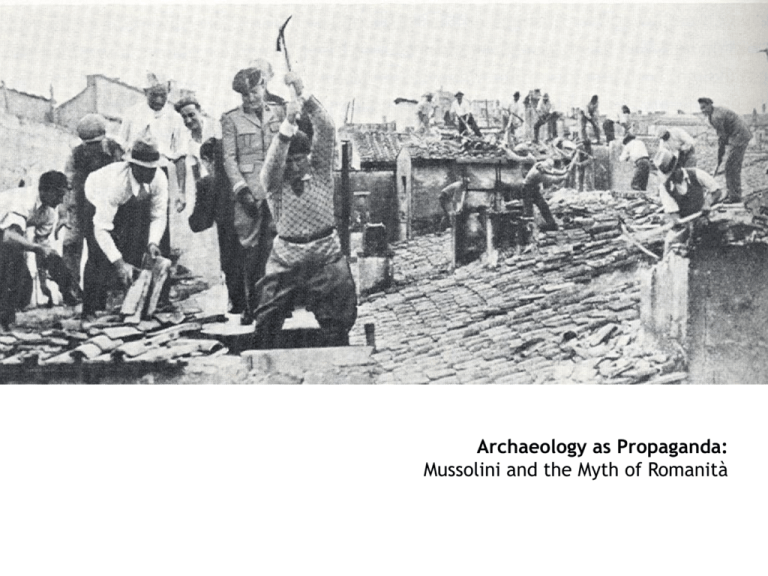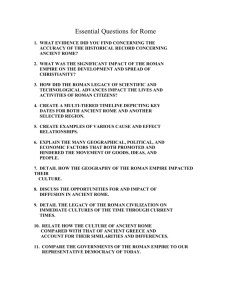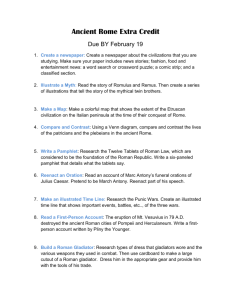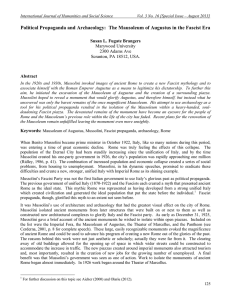Mussolini - Brown University
advertisement

Archaeology as Propaganda: Mussolini and the Myth of Romanità • • • • • • Relationship between archaeology and nationalism Artifacts are “culturally satisfying” and fuel national identity Especially true for totalitarian governments that depend on unity Case Study: Fascist Italy under Benito Mussolini Used ancient Roman monuments to reconstruct Italian identity and prop up his own power Urban consequences Building a National Identity • Other European nation-states in 19th and early 20th centuries using archaeology for political agendas – Napoleon in France – British Museum – Nazi prehistoric archaeology • Even before Mussolini, Italy starting to construct collective memory on ancient Roman past – Risorgimento chose Rome as new capital – Saw prospect of unification in romanità – Started to clear space for thoroughfares, Roman monuments, Forum – Oversimplification of past beginning to take root in mind of Italians Mussolini and the “Healing Pick” • • • • • • Shaped classical Rome that is today Projects intended to rid ancient monuments of “centuries of decadence” Demolition projects manipulate Rome’s history, disproportionately emphasize antiquity Mussolini’s regime controls through both force and visual propaganda Link between glorious Roman past and fascist future, places fascism in Italy’s destiny Likened Mussolini with greatness of Augustus “Rome is our point of departure and reference; it is our symbol or, if you wish, our myth. We dream of a Roman Italy, that is wise and strong, disciplined and imperial. Much of what was the immortal spirit of Rome, resurges in Fascism: Rome is the Lictor, Roman is our organization of combat, Roman is our pride and courage.” Mussolini, “Past and Future” speech at Birthday of Rome celebration, 1922 Mausoleum of Augustus (1938) • • • “Preservation by isolation” Demolished all post-Roman urban fabric surrounding the mausoleum Renovated tomb to serve as temple to fascist values Parade Route of Via dell’Impero • • • • • Carved path from Palazzo Venezia to Colosseum Ancient ruins to provide backdrop for fascist military celebrations In the process, destroyed 5000 housing units, 214,000 cubic feet of earth removed Few records kept, excavations done haphazardly Seductive link between ancient military glory and current fascist ideals Other propagandizing acts: • • • Mostra Augustea della Romanita (Augustan Exhibition of Roman Civilization) Museum of the Empire Planned Esposizione Universal Romana (1942) Urban Consequences • Selective preservation, dishonest to archaeological record – – • Ignores Rome’s rich urban fabric – – – – • Almost no dissent from academic world In scholars’ best interests to align with regime Early Christian period (churches) Middle Ages’ residential settlement Renaissance and Catholic Reformation Papal government’s railway stations and factories Sets up ancient Rome as urban utopia








